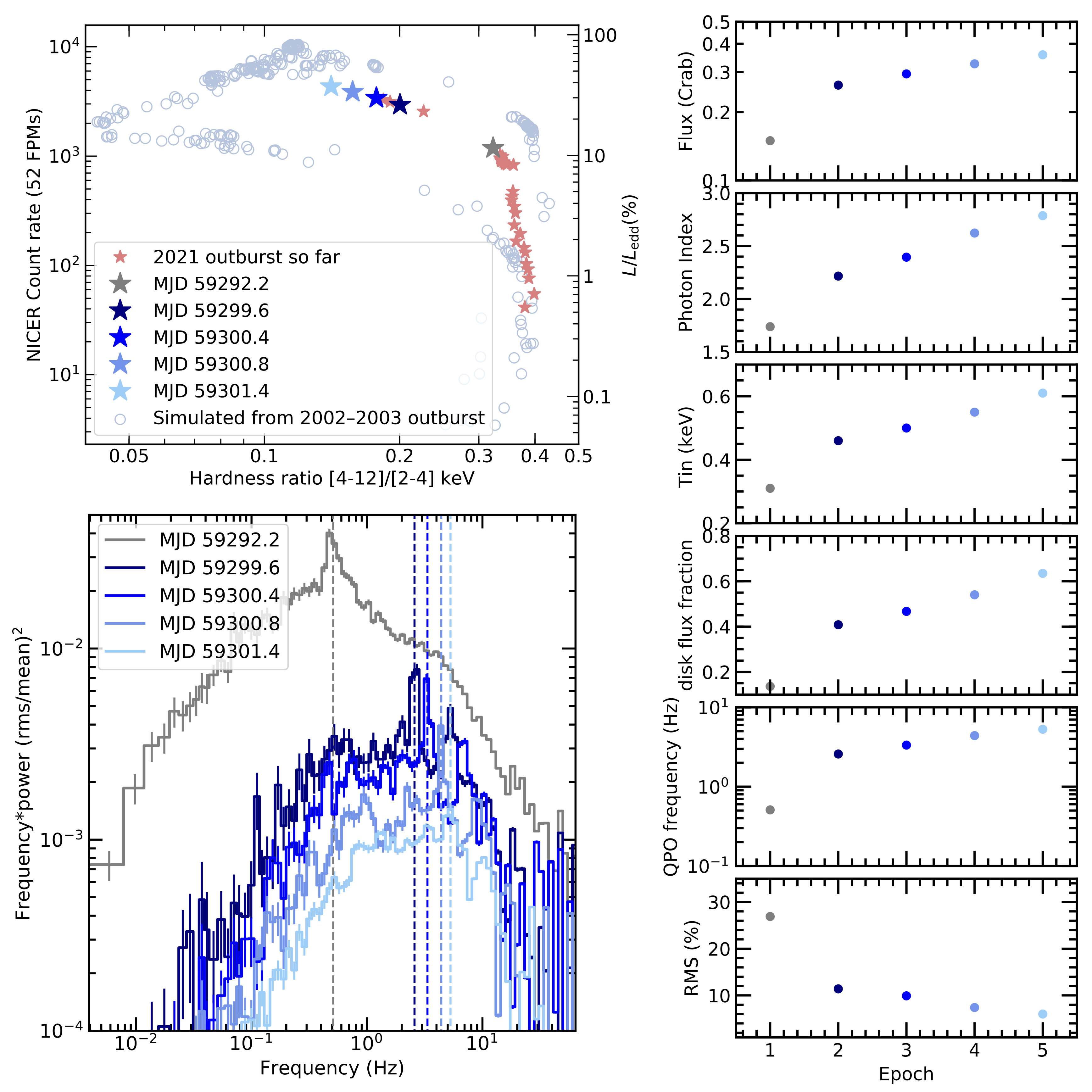NICER / ISS Science Nugget
for April 1, 2021
The Transition of GX 339-4
GX 339-4 is an archetypal black hole X-ray binary, in which a companion star orbits and transfers mass to a black hole. GX 339-4 goes into outburst every 2-3 years. NICER caught GX 339-4 during its outbursts in 2017 and 2019, but these outbursts did not progress beyond the so-called "hard state", when the X-ray spectrum is dominated by emission from the corona (hot plasma around the black hole), rather than the accretion disk of gas flowing into the black hole.
GX 339-4 is in outburst again and NICER observed it nearly every day from January 20 through March 20, when it had reached an
average NICER X-ray detection rate of 1,200 counts/s (corresponding to
approximately 11% the brightness of the Crab Nebula, a standard reference in
X-ray astrophysics). Modeling of the X-ray energy spectrum yielded a disk
temperature of ∼3.5 million degrees Kelvin and a photon index (a measure of the
corona's emission) of ∼1.74, confirming the source was still in a bright hard
state. After a 6-day visibility gap, NICER monitoring resumed. The first of
these observations, on March 26-28, showed a dramatic jump in count rate
to 2,500 counts/s, and rapidly rose further to ∼4,600 counts/s, with an increase
in flux (0.26 to 0.36 Crab), disk temperature (5.3 to 7.1 million degrees), disk
flux fraction, and also the photon index. The dramatic evolution of these
spectral parameters suggests that GX 339-4 transitioned to the hard-intermediate
state and is evolving rapidly toward the soft-intermediate/soft state, in which
the flux-energy spectrum becomes dominated by the emission from the accretion disk.
A timing analysis of the X-ray brightness shows strong evolution in the frequencies of quasi-periodic oscillations (QPOs) and overall variability level. Before the visibility gap, the integrated 0.1-64 Hz fractional root-mean-square (rms) variability was 27%, and a strong QPO at 0.51 Hz was present. After the coverage gap, the total fractional rms dropped from 11% to 6%, and the QPO moved to higher frequencies (2.58 Hz to 5.29 Hz) while becoming narrower and more prominent. These changes also indicate that the source entered the hard-to-soft state transition during the gap in visibility. NICER will continue to observe GX 339-4 during nearly every ISS orbit for the next couple of weeks, as both QPO type transitions and short-lived ballistic jets are commonly observed in this state-transition phase. Tracking these phenomena will improve our understanding of accretion and ejection physics in the strong gravity regime. These initial NICER results were reported by Wang et al. in Astronomer's Telegram #14490.

Figure: Left, top panel: The hardness-intensity diagram of GX 339-4 as measured with NICER. Bottom panel: Power spectral densities evolving with time, where QPO frequencies are represented using dashed lines. Right: Evolution of modeled flux, photon index, disk temperature, the fraction of disk emission flux to total flux, QPO frequency, and integrated 0.1-64 Hz fractional rms. All of the trends indicate that GX 339-4 is now undergoing a rapid transition in its accretion state.
<< Previous
Main Index
Next >>